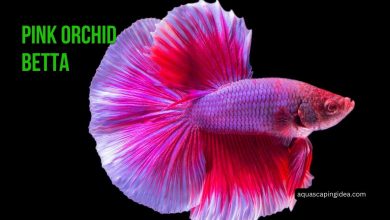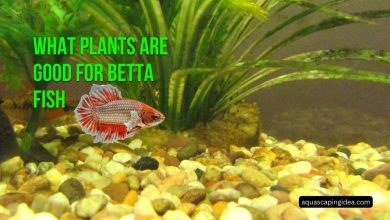Betta Fish Myths Dispelled

The colorful, long-finned betta fish is one of the most popular freshwater aquarium fish, yet their care and keeping remains shrouded in misconceptions. From only needing small bowls with no filtration to preferring solitary living conditions, much advice still propagated suggests inadequate environments.
However, modern science shows how bettas thrive in larger filtered tanks with appropriate tank mates. Just like any fish, they need clean, oxygenated water just as much as room to swim about. Recent behavioral studies also indicate most bettas tolerate living in community tanks, which even benefits their mental health. It’s time to fully re-examine the myths surrounding betta care to construct proper habitats supporting their physiology and nature. When provided the correct living conditions, these engaging fish can fully showcase their beauty, personality and optimal health for all aquarists to enjoy.
10 Betta Fish Myths Dispelled
The brilliant fins, myriad colors and fearless personas of the betta splendens species rightfully fuel avid aquarist enthusiasm. However, rampant hearsay throughout their tenure in home aquariums also cultivated several enduring myths failing to fully reflect betta realities under modern husbandry. Here are the top 10 commonly believed betta fish fables dispelled through scientific understanding:
Myth 1: Bettas Prefer Life in Tiny Containers
Fact: While bettas evolved experiencing stagnant shallow waterways in the wild, space facilitates basic health requirements. Most experts recommend 2.5-10+ gallon tanks with filtration/heat supporting naturalistic behavior. Their small native habitats reflected availability rather than preference. Bettas utilize ample tanks’ entire footprint happily.
Myth 2: Bettas Fight to the Death in All Encounters
Fact: While Indian/Chinese hybrids historically competed until exhaustion or demise for human gambling entertainment, bettas of certain species/strains instead naturally establish non-overlapping territories minimizing fatal disputes through threat displays rather than direct combat. With space permitting avoidance, lethal conflicts prove relatively uncommon.
Myth 3: Bettas Rest Comfortably on Aquarium Floors
Fact: The labyrinth structure bettas evolved allowing them to uniquely utilize atmospheric oxygen also means buoyancy control occupies bioenergetics costing resting strength. Extended fin/body contact with hard surfaces exacerbates fin/scale deterioration. Offer resting plants/hammocks preventing fatigue.
Myth 4: Bettas Only Demand Occasional Water Changes
Fact: Despite adaptations allowing survival in highly stagnant, oxygen-deprived water between seasonal monsoons, optimizing domesticated betta health requires completing partial water changes around 25% weekly to prevent toxic nitrogen accumulation from concentrated waste that shortens lifespan.
Myth 5: Bettas Thrive on All Basic Flake Foods
Fact: While adaptable, bettas require balanced nutrition from quality feeds containing over 34% protein minimum alongside frozen/live supplementation avoiding common issues like constipation from poor quality fillers. Their carnivorous ancestry means appropriately formulating commercial or homemade mixes proves vital.
Myth 6: All Colorful Bettas Sold are Males
Fact: Although showier fins and brighter pigments predominantly occur in male bettas, specialized breeding produced exceptionally resplendent female “rosetail” varieties exhibiting similarly ornate displays lacking historical documentation. Likewise, female fighters also manifest striking coloration.
Myth 7: Bettas Cannot be Kept With Any Tankmates
Fact: Female bettas generally tolerate same-species companions better than solitary males. However, both genders successfully coexist with appropriately sized peaceful shoaling species like harlequin rasboras, tetras and pygmy corydoras given adequate territory/resources, preventing likely aggression issues spawned by stress.
Myth 8: Male Bettas Attack Purely Out of Aggression
Fact: While territorial disputes generate dangerous biting that sometimes escalates into lethal conflicts best avoided through prevention, bettas evolved complex intra-species communication utilizing aggressive displays. Ongoing provocation stresses victims. Introducing unfamiliar fish risks eliciting alarm responses, not necessarily inherent aggression alone.
Myth 9: Bettas Require No Special Heating
Fact: As tropical fish indigenous to warm equatorial waters in Southeast Asia, bettas require elevated water temperatures around 78-82°F mimicking native conditions to maintain appetites, immune function and metabolism facilitating proper growth and activity. Local ambient room temperatures under 74°F risk chronic stress.
Myth 10: Bettas Can Survive Out of Water for Days
Fact: The betta’s signature labyrinth organ under their gill plates allowing gulping air to survive in stagnant low-oxygen water conditions unfortunately spawned the dramatic misconception they thrive equally outside of water. While enabling temporary transitioning between bodies of water, bettas ultimately drown if permanently removed from aquatic environments.
By scrutinizing common hearsay against modern research revelations, aquarists help dispel fiction from fact – improving betta fish husbandry reflecting the species’ genuine needs and amazing attributes free of stubborn antiquated folklore when making conscientious care decisions.
Frequently Asked Questions
Are male bettas really as aggressive as their reputation states?
While capable of lethal attacks, overt aggression more commonly arises from sustained stress exposure rather than inherent temperament characterizing the species. Non-combative bettas strains also exist.
Do bettas require aquarium heaters for healthy water temperature?
Yes. As tropical fish evolved in warmer equatorial climates, water temperatures under 74°F chronically slow betta metabolism and immunity. Thermostatic heaters promote health.
Can bettas recognize their owners?
Some evidence indicates bettas discern individual people through visual and audio cues. Consistent positive interaction helps strengthen bondbetween caretakers and fish.
Do bettas need filtration and water changes in small bowls?
Even in containers under 5 gallons, implementing cycled filtration and partial weekly water changes helps dilute harmful nitrogenous toxin accumulation from concentrated waste threatening health.
Is it true female bettas are less aggressive?
Often true regarding other species. However, female bettas often battle each other aggressively, especially when defending prime bubble nesting real estate among limited sites.
Conclusion
Just like dog or cat owners, aquarists carrying for betta fish hold responsibility for validating information differentiating fact from fiction to provide optimal care for pets relying completely on our understanding of their needs. By scrutinizing common myths against modern research, we continue dismantling outdated hearsay in favor of ever-improving husbandry.




